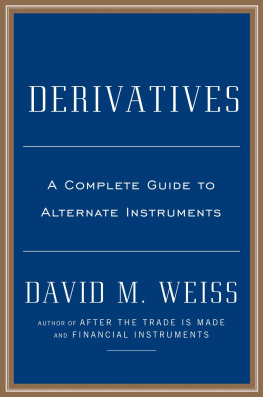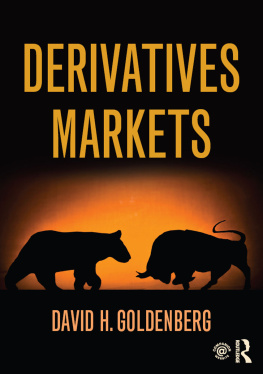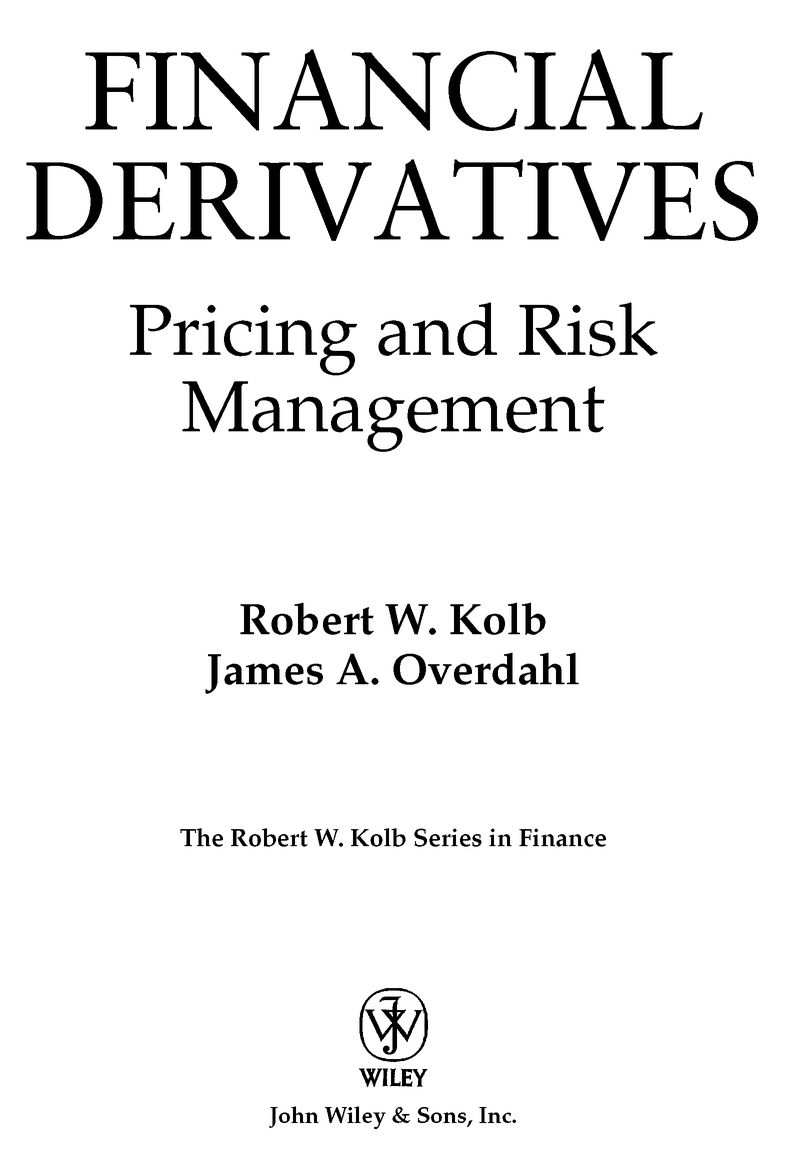Table of Contents
The Robert W. Kolb Series in Finance provides a comprehensive view of the field of finance in all of its variety and complexity. The series is projected to include approximately 65 volumes covering all major topics and specializations in finance, ranging from investments, to corporate finance, to financial institutions. Each volume in the Kolb Series in Finance consists of new articles especially written for the volume.
Each Kolb Series volume is edited by a specialist in a particular area of finance, who develops the volume outline and commissions chapters by the worlds experts in that particular field of finance. Each volume includes an editors introduction and approximately 30 articles to fully describe the current state of financial research and practice in a particular area of finance.
The chapters in each volume are intended for practicing finance professionals, graduate students, and advanced undergraduate students. The goal of each volume is to encapsulate the current state of knowledge in a particular area of finance so that the reader can quickly achieve a mastery of that special area of finance.
Introduction
In a time in which the finance industry is under attack and our entire financial system is under remarkable stress, financial derivatives are at the center of the storm. For the public at large, financial derivatives have long been the most mysterious and least understood of all financial instruments. While some financial derivatives are fairly simple, others are admittedly quite complicated and require considerable mathematical and statistical knowledge to understand fully.
With vast changes for our financial system in prospect, there has never been a time in which those engaged in setting public policy and the concerned general public have a greater need for a general understanding of financial derivatives. As the reader of this book will learn, financial derivatives are instruments of remarkable power and very justifiable uses. However, as this text also freely acknowledges and explains, the very power of these financial derivatives makes them subject to accident in the hands of the incautious and also makes them effective tools for mischief in the hands of the unscrupulous.
To contribute to an improved public understanding of these markets, Financial Derivatives explores the contemporary world of financial derivatives, starting with a presumption of only a general knowledge of undergraduate finance. These chapters have been written by many leading figures in academics, industry, and government for the benefit of advanced undergraduates, graduate students, practicing finance professionals, and the general public. As such, the chapters in this book provide a comprehensive understanding of financial derivatives. Financial Derivatives is comprised of 37 chapters organized into six parts:
Part One, Overview of Financial Derivatives, provides an introduction to and an overview of the types of financial derivatives, the markets in which they trade, and the way that traders use derivatives, and it also offers a broader perspective addressing the question of the social function of derivatives markets. Against that background, Part Two, Types of Financial Derivatives, explores the variety of derivatives, starting with the agricultural and metallurgical derivatives that were historically the first to be developed. This part also discusses financial derivatives based on stock indexes, foreign currencies, energy, and interest rate instruments. It continues by giving an overview of the variety of exotic options and a type of exotic options known as an event derivative. Two chapters focus on credit default swaps and structured credit products that have allegedly played a central role in the recent crisis in financial markets. Executive compensation is always controversial, it seems, and has generated particular outrage in the current crisis, so this part discusses executive stock options and concludes with an overview of some of the emerging financial derivatives that are likely to become prominent in the future.
After having introduced the markets and types of derivatives in Parts One and Two, Part Three turns to an examination of The Structure of Derivatives Markets and Institutions. Chapter 17 analyzes the development and current state of derivatives markets, and subsequent chapters take on issues such as a survey of the participants in the market and the way in which transactions are fulfilled. Fulfillment is a critical part of the market, because this issue concerns the honoring and completion of contracts, without which no viable market can persist. Closely related to this is the issue of counterparty credit riskthe risk that one party to the derivatives contract might default on contractual obligations. This part also surveys the regulation of derivatives markets, along with the principles of accounting as they pertain to derivatives. The part concludes with a brief account of some of the most famous derivatives disasters of recent decades.
Part Four, The Pricing of Derivatives: Essential Concepts, introduces the fundamentals of determining the price of derivatives. The part begins by introducing the principle of no-arbitrage pricing. The first condition of a well-performing market from the point of view of pricing is that prices in the market are such that arbitrage is impossiblewhere arbitrage can be defined as the securing of a riskless profit without investment. With this background, the discussion turns to the pricing of particular instruments, such as forward and futures contracts. Next the part introduces the famous Black-Scholes option pricing model and then considers the various ways in which this seminal model has been extended and enhanced to apply to other derivatives. The part concludes with an analysis of the pricing of swap contracts.
Part Five, Advanced Pricing Techniques, extends the pricing analysis initiated in Part Four. The chapters in this part are more technical, beginning with showing how Monte Carlo methods can be applied to price derivatives. The discussion of Monte Carlo techniques is immediately followed by a consideration of finite difference models, models that can be applied with great benefit when analytical models are not available. Much of the pricing of derivatives turn on the path that the underlying good is presumed to follow. When this path is described statistically, the description is known as a stochastic process, an understanding of which is necessary to more sophisticated analysis. Finally, this part explores how option prices respond to changes in their various input values.
Part Six, Using Financial Derivatives, concludes the book. By this time, the reader will be well aware that financial derivatives are very valuable for managing risks and for providing information about the future prices of underlying goods. Financial derivatives can also be used as tools of quite sophisticated speculation. This part begins with an exploration of option strategies used in speculation and shows how the same strategies can also be used to reduce risk. Next comes a discussion of how hedge funds use financial derivatives and, more exactly, how hedge funds use the techniques of financial engineering. Financial derivatives are powerful tools for managing interest rate risk, as this part also explores. Chapter 36 examines real options, options based on physical assets or opportunities that firms possess. The book concludes with a discussion of how firms can use financial derivatives to manage their own risks.












